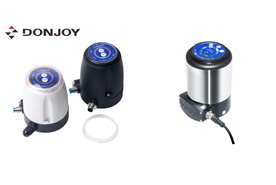The valve positioner is one of the key accessories of the pneumatic control valve. Its function is to turn the electrical signal output by the control device into the gas signal that drives the action of the control valve. It has the function of valve positioning, which can overcome both the friction force of the valve stem and the unbalanced force caused by the change of medium pressure, so that the valve can quickly follow and correspond to the control signal output by the regulator to realize the rapid positioning of the regulating valve. , to improve its adjustment quality. With the development of intelligent instrument technology, microelectronics technology is widely used in traditional instruments, which greatly improves the function and performance of instruments.

The principle of valve positioner: the feedback rod feedback valve opening position changes, when the electromagnetic torque generated by the input signal is equal to the torque generated by the feedback system of the positioner, the force balance system of the positioner is in a balanced state, and the positioner is in a stable state, At this time, the input signal is proportional to the valve position. When the input signal changes or the force of the medium fluid changes, the balance state of the force balance system is broken, and the force of the magnetoelectric component and the force generated by the feedback loop caused by the change of the valve stem position are in an unbalanced state. The action of the nozzle and the baffle makes the output pressure of the air source of the positioner change, and the change of the air chamber pressure of the actuator pushes the actuator to move, so that the valve stem is positioned to a new position, which corresponds to the input signal again and reaches a new equilibrium state. In use, changing the structure of the feedback rod of the positioner (such as the cam curve) can change the positive and negative effects of the regulating valve, flow characteristics, etc., to improve the performance of the regulating valve.
The above is the information that DONJOY has collected for everyone, I hope it can help you.


